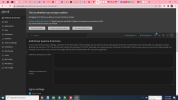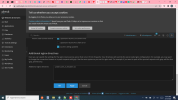- Server operating system version
- Windows 10 64 bit
- Plesk version and microupdate number
- Version 18.0.52 Update #3
Hi all,
jJust got a new VPS that runs on NGinx and will need help to enable underscore in Request Headers that hit my server.
I am creating some endpoints for a client who is insistent on underscores for a particular header SIGNATURE_METH.
I have researched how to do this and been told to edit the httpd.conf file but the Plesk console doesnt allow access to the file.
My Plesk version is Version 18.0.52 Update #3
and Windows version is: Windows 10 64 bit
Can someone help out please?
Thanks
jJust got a new VPS that runs on NGinx and will need help to enable underscore in Request Headers that hit my server.
I am creating some endpoints for a client who is insistent on underscores for a particular header SIGNATURE_METH.
I have researched how to do this and been told to edit the httpd.conf file but the Plesk console doesnt allow access to the file.
My Plesk version is Version 18.0.52 Update #3
and Windows version is: Windows 10 64 bit
Can someone help out please?
Thanks


